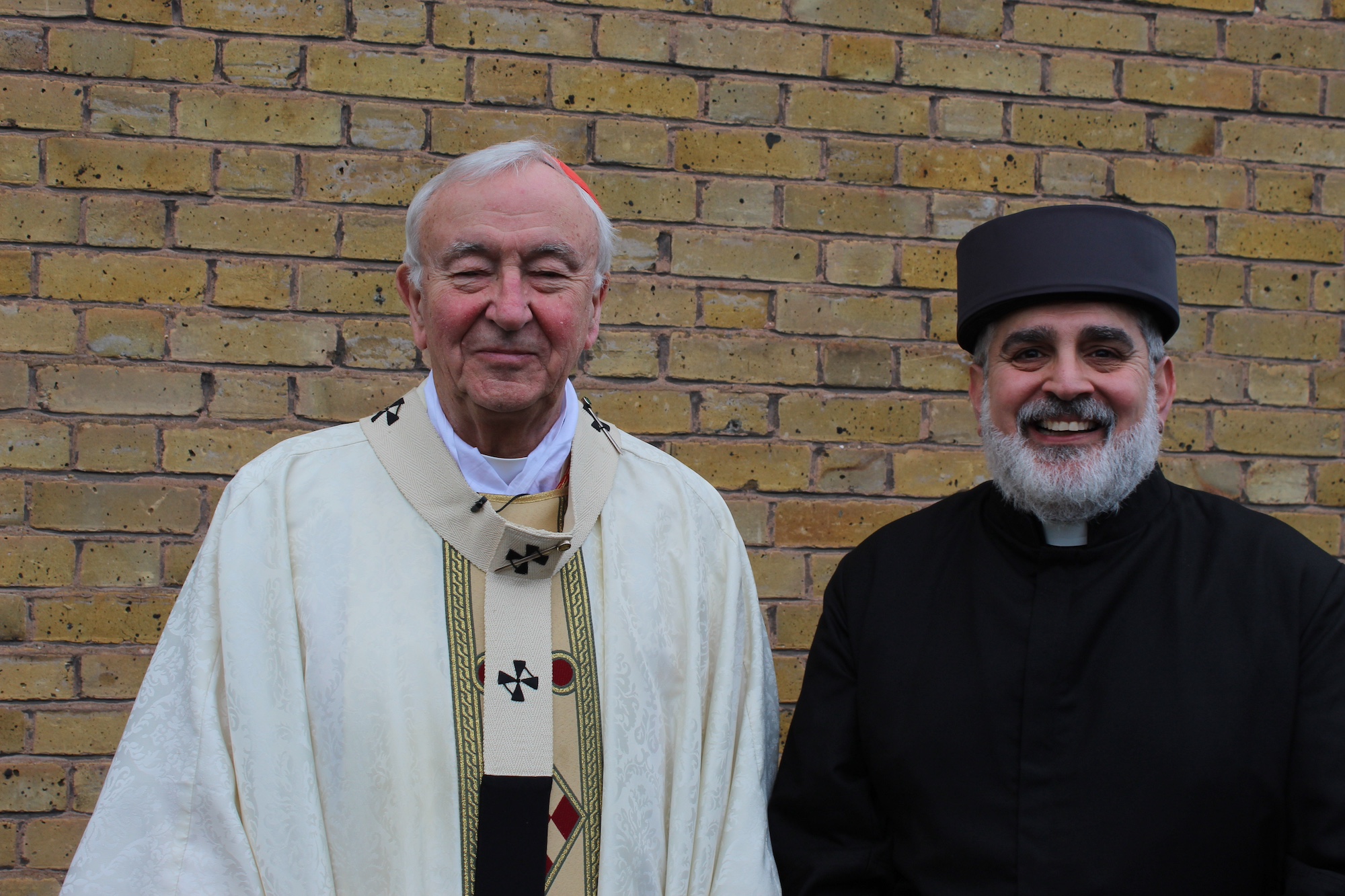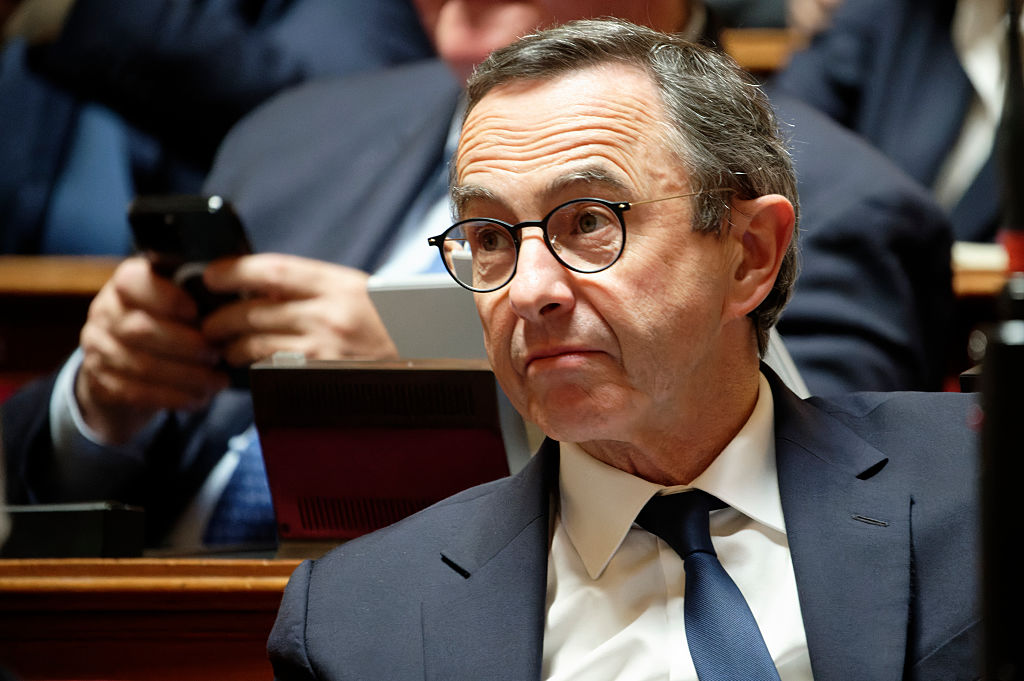I joined the Chaldeans in church on the morning after the night that the rebels in Syria took control of Damascus. We weren’t in Aleppo or on the plains of Nineveh but cocooned in a warm church at West Acton in London, where a community of Christian migrants from Iraq has settled in recent decades. Many came to this country during Saddam Hussein’s Baathist regime or after facing persecution from Islamists and militias after the invasion of Iraq.
We’re linked here to a misty ancient world in which Abraham came from Ur of the Chaldees and the Assyrians came down like a wolf on the fold
Outside, rows of bare pollarded lime trees were silhouetted against the sky, like Arthur Rackham illustrations, between semi-detached Mock Tudor houses with timbers let into the plasterwork of the facades. Inside the modern church, borrowed from the western-rite Catholics, clouds of incense rose while oriental chant, using quarter tones, ebbed and flowed, sometimes to a lilting dancelike rhythm. The congregation of 60 or 70 people could produce a good volume in the womblike building when they got their teeth into a bit of chant.
Before the sermon the priest asked for prayers for the Middle East, Syria in particular, and said that he hoped for peace. There was no other mention of world politics and the sermon, half in English, examined the Annunciation to the Virgin Mary of the coming birth of Jesus.
As for the liturgy of the Mass or Divine Mysteries, I was completely out of my depth. The first surprise was that the procession to the altar was led by two women in white robes and wearing lacey head-scarves. One of them read part of the Scripture. A choir of a dozen women sang. This is a Church with a male priesthood, but it is culturally far removed from its Muslim Arab neighbours.
I stared at my service book. You must start at the back, as with a Hebrew prayer book, as the writing goes from right to left. In addition to the Chaldean prayers in Syriac script, there was a column in Arabic and a column of Chaldean written in Arabic script. I could read nothing but an English paraphrase kindly added down one side. The prayers were elevated, archaic and accompanied by gestures and ringing of handbells. There was plenty of incense, rising from a thurible with a short chain.
Only two words that I heard were recognisable: Alleluia and Amen. Both come from Hebrew. At home these worshippers speak the related Aramaic, descended from the language that Jesus spoke. Worship is fundamentally in Syriac, an East Syrian hieratic form of Aramaic. The names used to label the liturgy and the worshippers mean a lot in a contested part of the world. The Chaldean Catholic rite is the majority Christian church in Iraq and neighbouring parts of Syria. The adjective Chaldean refers to the language and is the word its speakers use to describe themselves.
We’re linked here to a misty ancient world in which Abraham came from Ur of the Chaldees and the Assyrians came down like a wolf on the fold. But not many in Acton looked like the figures in Ashurbanipal’s 2,500-year-old stone-carved lion hunt in the British Museum. Just down the road, on the other side of Ealing, is the Cathedral of St Mary of the Assyrian Church of the East. This follows the same liturgy but is not in communion with the Pope of Rome. It was reputed to follow Nestorianism, a heretical doctrine about the nature of Christ. These things are important, but I think the accusation was a giant misunderstanding, though it endured for centuries.
The Chaldean Catholics and the Assyrian Church of the East have in the last two generations come to a convincing common understanding on belief in Christ, and their members can avail themselves of Holy Communion in each other’s churches at need.
For more than a century the state of Aramaic-speaking Christians has been dire. They suffered massacres under the Ottomans during the first world war. Before the Iraq war of 2003 there were perhaps two million Chaldeans Catholics there; now there are fewer than 200,000. There are now more Chaldean Catholics in the USA (250,000) than in Iraq. But in England there is only one Chaldean priest, Father Andrawis Toma.
As the congregation at church passed on a sign of peace by sliding their neighbour’s right hand between their own hands, the priest prayed for peace. ‘O Christ, the peace of those in heaven and on earth,’ he said, ‘put an end to wars on earth, and calm the nations that desire war so that we may live a peaceful life, in purity and fear of God.’
‘Since 2003 we have not felt at peace in Iraq,’ Fr Toma told me after the liturgy. Isis and militias forced 90 per cent of Chaldeans to leave. ‘We don’t want the same in Syria.’
At the same time, one of the lay people present pointed me to a remark by the Chaldean Patriarch, Cardinal Louis Raphael Sako, when he visited the shrine of Walsingham in Norfolk last year: ‘We have always been a persecuted people but when we celebrate the liturgy, we become free and joyful, and everyone sings prayerfully and joyfully.’
The Chaldeans follow the same calendar as the West and will celebrate Christmas on 25 December. After the Mysteries in Acton, people gathered in the church hall for some Iraqi food and a glass of wine. Some began a Chaldean dance, a sort of line dance, that is impossible to perform sorrowfully.








Comments